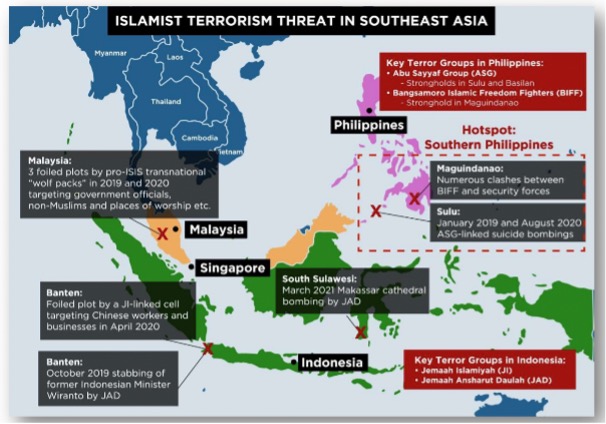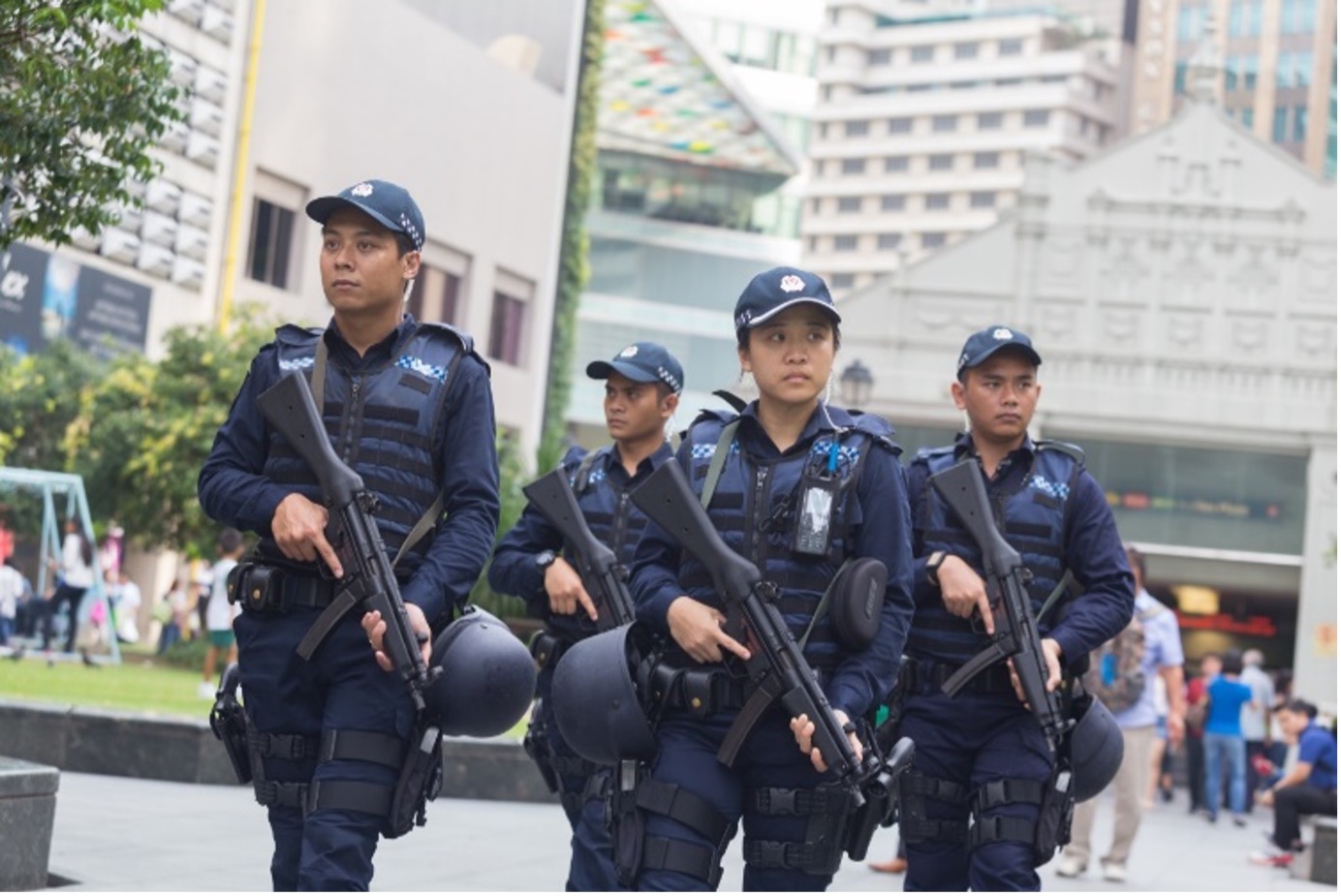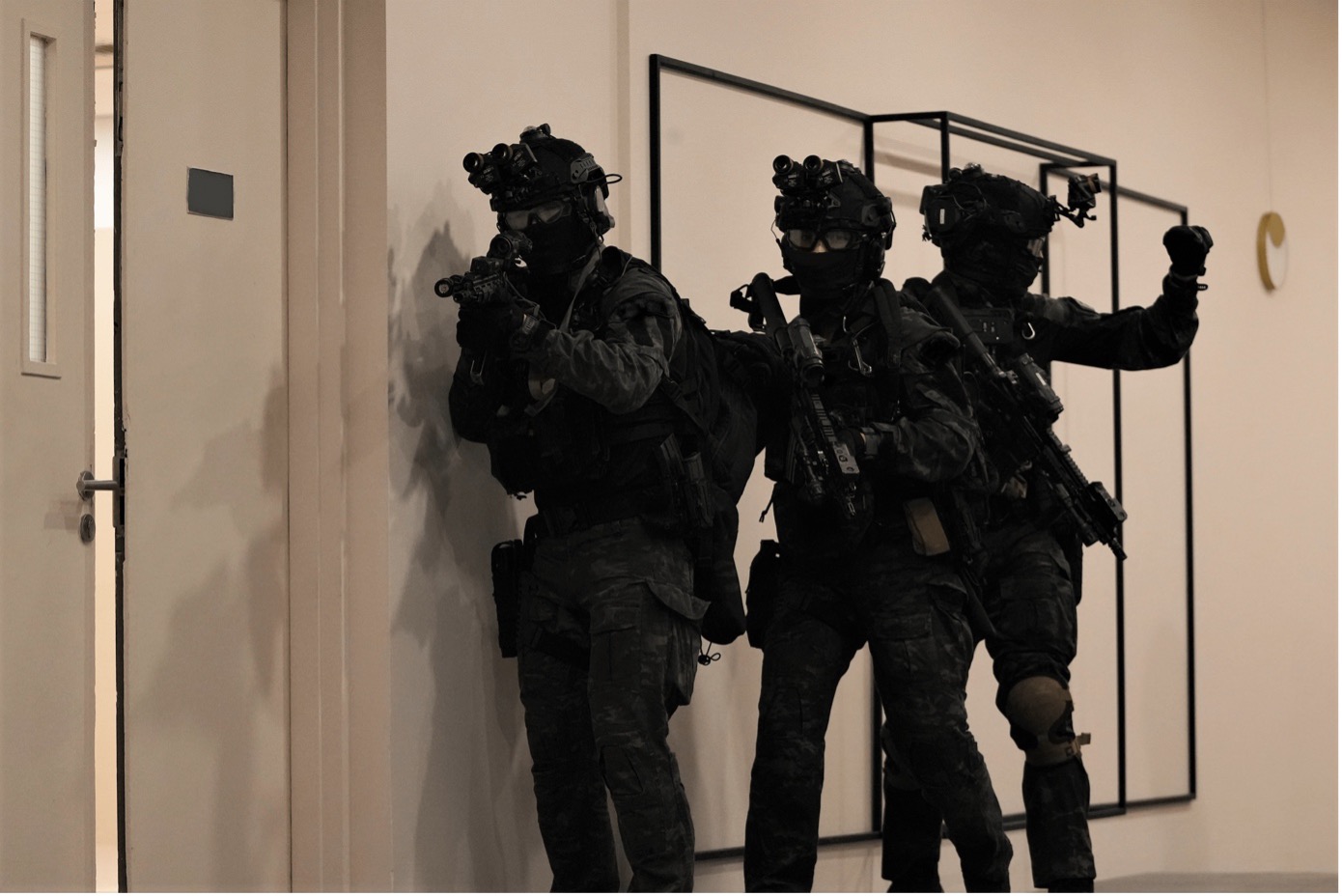Terrorism and Self Radicalisation
Terrorism and Self-radicalisation
Singapore has been struck by terrorist incidents in the past, such as the Laju incident in 1974 and the SQ 117 hijacking by Pakistani extremists in 1991. However, these incidents were isolated and episodic, in contrast to the more widespread, transnational and sophisticated brand of terrorism that plagues Singapore and the region today. In recent years, Singapore has been identified by terrorist groups as a target, and the threat of terrorism remains high.
The events of September 11, 2001 (9/11) in the United States (US) underscored the catastrophic impact of militant transnational terrorism and sparked a global response to terrorism, with the US waging a war on terror on Al-Qaeda in Afghanistan and Iraq. The terror group, Al-Qaeda, had hijacked four commercial planes; two were crashed into the World Trade Centre twin towers in New York City, one plane hit the Pentagon just outside Washington, D.C., and the fourth plane crashed into a field in Shanksville, Pennsylvania. Almost 3,000 people were killed during the 9/11 terrorist attacks, the largest attack on American soil since the Japanese bombed Pearl Harbour in World War 2.
Closer to home, Al-Qaeda had forged links to its affiliate, the Jemaah Islamiyah (JI) group, in Southeast Asia in the 1980s and 1990s. JI intended to set up a pan-Islamic state in Southeast Asia and had a branch in Singapore. It even planned to construct truck bombs to mount suicide attacks on Singapore targets, but the perpetrators were arrested by Singapore authorities before the attacks were carried out. On 9 December 2001, the Internal Security Department (ISD) arrested six Singaporean JI members, thwarting plans to attack Yishun MRT station and several foreign embassies. In total, 36 persons were arrested during ISD’s operations against the JI group in 2001 and 2002.
 Top to bottom left: JI members had taken videos of Yishun MRT Station and its surroundings in preparation for their attacks. Bottom right: Video recorder used by JI members during their reconnaissance. Screenshots: Internal Security Department (ISD).
Top to bottom left: JI members had taken videos of Yishun MRT Station and its surroundings in preparation for their attacks. Bottom right: Video recorder used by JI members during their reconnaissance. Screenshots: Internal Security Department (ISD).
The threat has not abated through the years. The Islamic State in Iraq and Syria (ISIS), which aims to establish a caliphate as an overarching global state over Muslims worldwide, remains a menace even though it has lost its territory in Iraq and Syria.
ISIS originally began as part of Al-Qaeda but later rebranded itself and seized territory in Iraq and Syria from 2014. It represents a more sophisticated form of terrorism; while Al-Qaeda fashioned itself as a rebel group, ISIS positioned itself as a legitimate state for all followers of its radical brand of Islam. It also used social media, the Internet and other media to propagate its ideology worldwide. This insidious approach helped recruit thousands of foreign fighters and spawned local groups to orchestrate attacks in regions like Europe and Southeast Asia, thousands of miles away from the Middle East.
-01.jpeg) Image: Singapore Terrorism Threat Assessment Report 2021, ISD (STTAR reports over the years can be found at https://www.sgsecure.gov.sg/terror-threat )
Image: Singapore Terrorism Threat Assessment Report 2021, ISD (STTAR reports over the years can be found at https://www.sgsecure.gov.sg/terror-threat )
Global terrorist groups like ISIS and Al-Qaeda have proven resilient and adaptable, despite their leadership losses and military setbacks in recent years. Even amidst the COVID-19 pandemic, they have stepped up their recruitment and propaganda on social media, encouraging their supporters to conduct attacks. There has been international concern over the possibility of foreign fighters for ISIS returning from the Middle East to set up terrorist cells in their home regions.
With its sizeable Muslim population, Southeast Asia has been a target for ISIS, and its affiliates have declared Indonesia, Malaysia and parts of Southern Philippines as its possible territory. About a thousand fighters from the region have travelled to the Middle East to fight, forming their own combat unit. After training there, some of these fighters have returned with combat experience and a network of radical contacts, elevating the terrorism threat in Southeast Asia.
In 2016, pro-ISIS terrorists in Indonesia (who received instructions from a Syrian-based Indonesian ISIS militant) planned a rocket attack on Marina Bay Sands from Batam, just 18km away from downtown Singapore. The attack was foiled with the arrest of six terror cell members by Indonesian police in August 2016.
 Image: Singapore Terrorism Threat Assessment Report 2021, ISD
Image: Singapore Terrorism Threat Assessment Report 2021, ISD
In recent years, far-right extremism has also emerged as a major terrorism concern overseas, and is the fastest-growing threat in some Western countries. This movement is inspired by ideologies such as neo-Nazism, neo-fascism and white nationalism. Many such groups believe that their race is inherently superior to others and that their country should only belong to a certain group of people. This has, in turn, led to problems such as anti-immigration and racial supremacist sentiments, resulting in serious cases of racism and racist violence.
In 2020, a 16-year-old Singaporean youth made plans to attack Muslims at two mosques in Singapore, having been influenced by far-right extremist ideologies. These plans were foiled as he was detained under the Internal Security Act. Apart from the case of the 16-year-old youth, there is currently no indication that far-right extremism has gained significant traction in Singapore. However, this does not mean that we are immune to such threats. We have to stay vigilant and take a firm stand against any rhetoric that promotes hatred or animosity towards other communities, and draw the line at the pursuit of any violent action, regardless of how it is justified.
In Singapore, the main domestic terrorism threat comes from self-radicalised actors influenced by violent extremist materials online. The use of online and digital communications networks to recruit terrorists makes it difficult for authorities to detect the radicalised individuals. The trend of self-radicalisation in Singapore saw a sharp spike after 2015, following the emergence of ISIS. ISIS’ leadership and territorial losses in Syria and Iraq have not yet diminished the appeal of the group. It is important that we remain vigilant against such threats.
Safeguarding Singapore Against Terrorism
The Government has taken significant steps to enhance our counter-terrorism capabilities. Part of the Singapore Police Force (SPF)’s enhanced response capabilities include the Emergency Response Teams (ERTs) and Rapid Deployment Troops (RDTs). The ERTs patrol various locations, including iconic locations, locations with high footfall, and transport nodes. They are also trained to respond swiftly to neutralise threats. RDTs are equipped with tactical response motorcycles to navigate through traffic gridlock. The In-Situ Reaction Teams (IRTs) complement ERTs and RDTs, and are deployed at iconic areas with high footfall, such as Orchard Road and Marina Bay, to project deterrence and provide quick response.
 An Emergency Response Team (ERT) from the Singapore Police Force (SPF) patrolling Raffles Place. Image: MHA.
An Emergency Response Team (ERT) from the Singapore Police Force (SPF) patrolling Raffles Place. Image: MHA.
Regular counter-terrorism exercises are also conducted to enhance operational preparedness. Some of these exercises are conducted with community stakeholders such as shopping malls, educational institutions, places of worship, and public transport facilities. Some of these exercises are also conducted jointly across agencies from the Home Team, such as the SPF and Singapore Civil Defence Force (SCDF), as well as with the SAF.
Apart from operational response from the authorities, our community response is also critical in our fight against terrorism. The SGSecure movement aims to sensitise, train and mobilise the community in the fight against terror. Led by the Ministry of Home Affairs, the national movement is supported by six partner agencies including the Ministry of Culture, Community & Youth, Ministry of Communications and Information, Ministry of Defence, Ministry of Education, Ministry of Manpower and the People’s Association, to reach out to different segments of the community such as religious/community groups, media, schools, NS and Home Team volunteer community, workplaces and neighbourhoods. SGSecure programmes increase community awareness, vigilance and cohesion against terrorism as well as raise community emergency preparedness.
Over the years, the SAF has strengthened its contributions to homeland security, working closely with the Whole-of-Government (WoG). The SAF has set up the Chemical, Biological, Radiological and Explosive Defence group, as well as high-readiness task forces, such as the Special Operations Task Force (SOTF) and Island Defence Task Force to deal with any terrorism and other non-conventional threats during peacetime. The SOTF comprises elite soldiers from the Army’s Commandos and the Navy’s Naval Diving Unit. They can tap on assets from across the SAF for complex missions such as neutralising terrorists and hostage rescue. The Army Deployment Force (ADF), comprising highly trained regulars to fulfil an expanded range of counter-terrorism operations, also work alongside the SOTF in safeguarding Singapore from terrorist threats.
The Mumbai and planned Marina Bay Sands attacks had shown that terror attacks can come via the sea. In 2011, the Singapore Maritime Crisis Centre (SMCC) was set up for a Whole-of-Government approach to detect and deter maritime security threats. The SMCC comprises personnel from agencies such as the Republic of Navy, SPF, Maritime and Port Authority of Singapore, Immigration and Checkpoints Authority, Singapore Customs and SCDF.
As we are a multi-racial and multi-religious society, racial and religious fault-lines may be exploited to disrupt our social harmony. Some individuals may be more susceptible to influence and may even be motivated to plot and carry out attacks against other individuals or groups. The 9/11 attacks and the ISD’s subsequent operations against the local network of the JI group in Singapore had caused some anxiety amongst the community.
To prevent the actions of a small and isolated group of misguided Muslims from resulting in distrust and suspicion amongst Singaporeans, the government formed the Inter-Racial Confidence Circles, later renamed in 2007 as Inter-Racial and Religious Confidence Circles, to serve as bridges for leaders of various racial and religious communities to interact and build trust and friendship.
A ground-up volunteer group of Islamic scholars and teachers, known as the Religious Rehabilitation Group (RRG), was formed in 2003 following the arrests of the JI members in Singapore. The RRG seeks to rehabilitate the JI detainees and supervisees through counselling, to correct the misinterpretations of religious concepts and dispel the extremist ideologies the individuals have been indoctrinated with. The RRG’s work is complemented by the Inter-Agency Aftercare Group (ACG), comprising an informal network of Muslim organisations, which was set up in 2002 to provide emotional, social and financial support to the JI detainees, supervisees and their families. The RRG and ACG are ISD’s key partners in the holistic rehabilitation programme for individuals dealt with under the ISA for terrorism-related conduct.
Over the years, the RRG’s and ACG’s work have expanded to also include community outreach against the threat of self-radicalisation. The Home Team also teaches and encourages members of the community to be more aware of and look out for signs of individuals around us who might be at risk or have become radicalised.
 Troopers from the Singapore Armed Forces’ (SAF) Special Operations Task Force (SOTF) preparing to storm the room during a counter-terrorism exercise conducted by the SAF at the F1 Pit Building on 2 August 2021. Image: MINDEF.
Troopers from the Singapore Armed Forces’ (SAF) Special Operations Task Force (SOTF) preparing to storm the room during a counter-terrorism exercise conducted by the SAF at the F1 Pit Building on 2 August 2021. Image: MINDEF.


